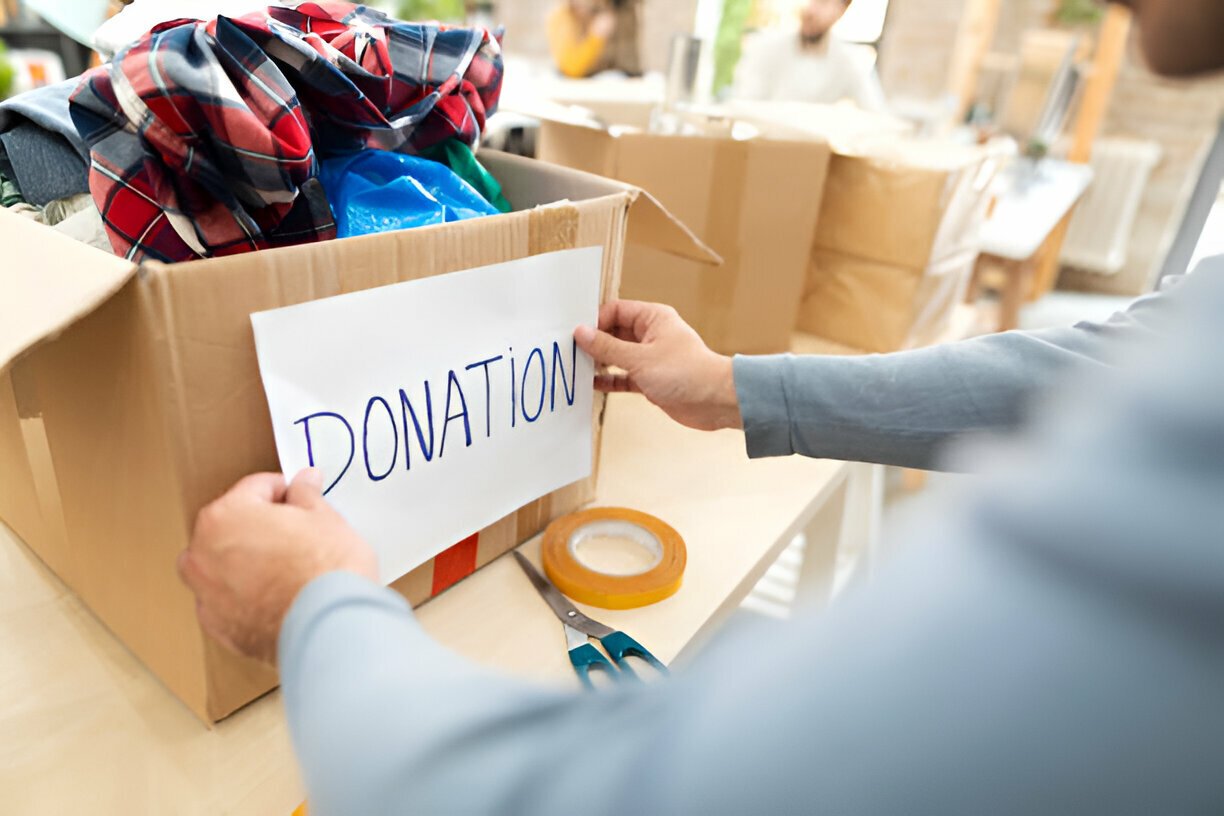Supporting a local charity doesn’t always mean giving money. Non-cash donations are just as impactful, sometimes even more so. Items like clothes, furniture, or books can meet urgent needs and help non-profit platforms achieve their goals. By understanding the process of donating these items, you can ensure that your contributions truly make a difference. Here’s how you can start donating non-cash items and support the good charities to donate to.
Why Non-Cash Donations Are Important
Non-cash donations play a critical role in community support. While financial contributions help fund operations, physical items often address immediate needs. For example, donated clothing can keep someone warm, while furniture can help a family start anew. These donations bridge gaps that money alone cannot fill.
Local charities often depend on these items to support their programs. Many individuals and families lack basic necessities, and your unused items can fill these gaps. By donating, you extend the life of these items and give them new meaning.
Non-cash donations also support the operational goals of non-profit organizations. When charities receive physical goods, they can allocate monetary resources to other critical areas, such as expanding outreach or improving facilities.
Preparing Your Items for Donation
Before donating, it’s essential to prepare your items properly. Start by inspecting everything. Ensure the items are in good, usable condition. Damaged goods might not be accepted and can even create extra work for the charity.
For clothes, wash them thoroughly and repair any minor damages. Electronics should be functional, and furniture should be sturdy and clean. If you’re donating toys or books, make sure they are in good shape, with no missing pieces or pages.
Proper preparation not only helps charities but also ensures your donations bring maximum value. Clean, functional items save charity staff and volunteers time and effort, allowing them to focus on their core mission.
Researching Local Charities
Not all charities accept every type of donation, so research is key. Look for local non-profit platforms that align with your values and the type of items you wish to donate. For example, some organizations focus on clothing and food, while others may need furniture, books, or electronics.
Visit the charity’s website or contact them directly. Many charities list their current needs online, making it easier to understand what they are looking for. Some charities even have seasonal donation drives, such as winter coat collections or back-to-school programs for children.
By finding the best charities to donate to, you ensure your items are used in meaningful ways. This step also helps you connect with organizations that truly need your support, maximizing the impact of your contribution.
Types of Non-Cash Items You Can Donate
There is a wide variety of non-cash items that you can donate. Clothes and shoes are some of the most commonly donated items. Gently used clothing can bring warmth and dignity to those in need, especially during colder months.
Furniture donations are another popular option. Items like beds, tables, and chairs can help families rebuild their homes after facing hardships. Household items, such as kitchen appliances, utensils, and linens, also make a significant impact.
Books and toys bring joy to children and foster education. Many schools and libraries accept these items to support community learning programs. Electronics, such as computers, tablets, and phones, help individuals stay connected and find new opportunities.
Even vehicles can be donated. Many charities accept old cars, which they can sell to raise funds for their programs. Always confirm with the organization to ensure your items align with their needs.
Where to Donate Non-Cash Items
Several local options are available when it comes to donating. Well-known organizations like Goodwill and Salvation Army accept a wide range of non-cash items. They often use these donations to directly support those in need or sell them in thrift stores to fund their programs.
Homeless shelters frequently need bedding, clothing, and toiletries. Food banks appreciate donations of canned goods, dry foods, and other non-perishable items. Libraries and schools are excellent places to donate books and learning materials.
Animal shelters are another great option. They often need pet supplies, such as food, beds, and toys. Community centers also accept various items and often act as a hub for multiple charities.
Donating locally ensures your contributions have a direct impact on your community. It also reduces transportation costs and environmental impact.
Steps to Donate
Once you’ve chosen a charity, reach out to them to confirm their donation policies and needs. Some charities have specific drop-off locations or designated times for donations. Others may offer pickup services for larger items, such as furniture or appliances.
When preparing your items for delivery, label them if necessary. For example, separate clothing by type or size, and ensure fragile items are packed securely. If you’re donating electronics, remove any personal data to protect your privacy.
Plan to deliver your donations during the charity’s business hours. This ensures staff or volunteers are available to receive and sort your items promptly. Showing patience and respect during the process goes a long way in supporting the organization’s efforts.
Benefits of Donating Non-Cash Items
Donating non-cash items offers numerous benefits. First, it allows you to declutter your home while giving your unused items a second life. Instead of discarding items, you contribute to a sustainable cycle of reuse.
Environmental benefits are another significant advantage. By donating, you reduce waste and promote recycling. Items that might have ended up in a landfill are now used to improve lives.
Supporting a non-profit organization strengthens the community. Your contributions directly help individuals and families in need. Additionally, your actions might inspire others to give, creating a ripple effect of generosity.
Tax benefits are also worth noting. Many charities provide receipts for non-cash donations, which you can use for tax deductions. This incentive encourages more people to donate and support charitable causes.
Challenges and Solutions
While donating is rewarding, there can be challenges. One common issue is finding time to sort and deliver items. To overcome this, set aside specific days for decluttering and donations. Treat it as a planned activity rather than a last-minute task.
Another challenge is knowing where to donate. Online directories and charity databases can help you locate organizations in your area. Community events or donation drives are also excellent opportunities to contribute.
If transportation is a concern, look for charities that offer pickup services. Many organizations are happy to collect larger items directly from your home.
Lastly, if you’re unsure whether your items are suitable for donation, consult the charity’s guidelines. Most organizations have detailed lists of acceptable and non-acceptable items on their websites.
What Non-Cash Donations Impact Non-Profit Organizations
Non-cash donations are lifelines for many non-profits. They enable charities to provide immediate relief to those in need. For example, donated clothing can be distributed to the homeless, while furniture helps families displaced by natural disasters.
These contributions also reduce operational costs for charities. By receiving donated goods, organizations can allocate their funds to other critical areas, such as community outreach or program development.
Additionally, non-cash donations strengthen the bond between donors and non-profits. By giving tangible items, donors can see the direct impact of their contributions. This connection fosters trust and long-term support for the organization.
Conclusion
Donating non-cash items is a meaningful way to support local charities. Your unused belongings can bring comfort, joy, and hope to those in need. By choosing the good charities to donate to and preparing your items thoughtfully, you ensure your contributions have a lasting impact. Together, we can strengthen our communities, reduce waste, and make a difference—one donation at a time.

